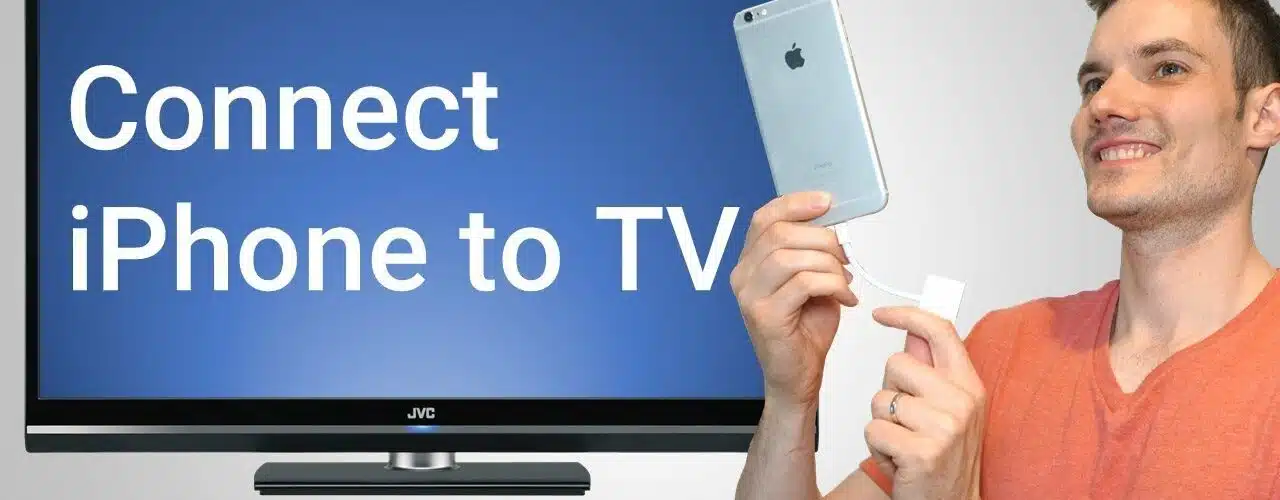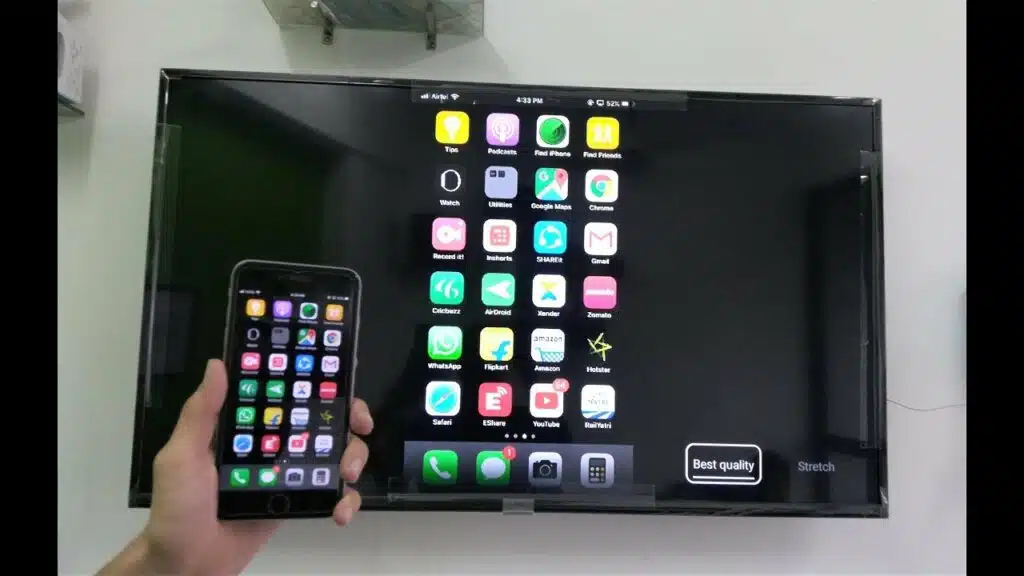Table of Contents
How To Connect To TV From iPhone?
How To Connect To TV From iPhone? Just plug one end of an HDMI cable into a free HDMI port on your TV or monitor and the other into Apple’s Lightning Digital AV Adapter. Then use your TV remote or iOS app to switch to the HDMI input you chose.
Alternatively, you can mirror the iPhone’s display wirelessly using AirPlay. You’ll need an AirPlay 2-compatible TV or streaming device and a Wi-Fi network, of course.
Features Of Connect To TV From iPhone
- There are many ways to connect your iPhone to a television or monitor, including using wireless technology like AirPlay. You can also use a wired HDMI cable to connect your iPhone or an adapter with a USB port (though this may not work on all TVs and monitors). And finally, there are third-party apps that can give you an AirPlay-like experience for devices like Chromecast and Roku.
- If you have an Apple TV or an AirPlay 2-compatible TV, you can use the built-in screen mirroring feature to display what is on your iPhone on the big screen. This includes videos, photos, and other content. Just make sure that your iPhone and TV are connected to the same Wi-Fi network and powered on. On your iPhone, swipe down from the top of the screen (iPhone X or later) or slide up for Control Center (iPad with iOS 12 or later). Tap the screen mirroring button, which looks like two overlapping boxes. If you see a passcode on the TV (which may happen for first-time users), enter it on your iPhone.
- If you don’t have a TV or an Apple TV, or if you want to share something on your phone’s screen with friends in the room, you can use a third-party app like DoCast to get an AirPlay-like experience for Chromecast and Fire TV devices. But keep in mind that this method will show everyone in the room what’s on your phone’s screen, including text messages, compromising photos, and embarrassing Google searches.
HDMI
The easiest and most obvious way to connect your iPhone to HDMI is with Apple’s AirPlay wireless protocol. It lets you mirror your phone’s display on the TV and can also stream videos or other content directly to the screen. The catch is that you need a TV that supports AirPlay or an Apple TV streaming box (or, for older models of the iPhone and iPad, a compatible third-party HDMI dongle).
To get started, make sure your TV and iPhone are connected to the same Wi-Fi network and on the same Bluetooth connection. Open Control Center on your iPhone (swipe down from the top of the screen on an iPhone X or later, or swipe up on an iPhone 8 or earlier or iPad running iOS 11 or earlier) and tap the AirPlay icon. Select your TV from the list, enter any passcode if prompted, and you’re good to go.
When you start using apps on your iPhone, they’ll appear on the TV and sound will come through your TV speakers or your connected headphones (if applicable). To stop mirroring, reopen Control Center and tap the icon that looks like two overlapping boxes. To reconnect, just follow the steps again. You can also tap the AirPlay icon within some video apps, such as YouTube, to launch the feature without requiring the use of a Control Center.
VGA
If you have a VGA port on your TV or monitor (which is commonly found on older TVs and computer monitors), you can mirror the screen of your iPhone to it. The quality won’t be as good as using HDMI, but it can still be useful for replaying videos, displaying photo libraries, presenting slideshows, communally browsing social media, or playing iOS games.
One way to connect an iPhone to a TV is by using Apple’s AirPlay wireless protocol, which allows you to stream your entire screen or just video from within supported apps. To get started, make sure your iPhone is connected to the same Wi-Fi network as your Apple TV or AirPlay-compatible smart TV or Mac. Then open Control Center by swiping down from the top of the screen on iPhone X and later or iPad with iOS 13 and earlier. Tap Screen Mirroring and select your device from the list.
You’ll need a Lightning to HDMI or VGA adapter, which you can buy from Apple or third-party vendors. Make sure the adapter you purchase supports HDCP before you use it with any such content. Once you’ve attached the adapter to your iPhone, connect it to your TV or monitor and follow the on-screen instructions to start mirroring the display of your device to the big screen.
USB
If you’re an iPhone user, the quickest and easiest way to get what’s on your screen onto a big TV is by using the built-in screen mirroring feature. This is how Apple beams content from its own devices to TVs and other monitors, and it works with any brand of TV or monitor that supports AirPlay 2.
Depending on your iPhone, you may need to get an HDMI cable and a Lightning-to-HDMI or USB-C-to-HDMI adapter. Apple sells a variety of these in its stores and on its website, but you can also find cheaper third-party versions on Amazon that work just fine.
Make sure that your iPhone and TV are both on the same Wi-Fi network. Open the Control Center on your iPhone (swipe up or down on the screen, depending on the version of iOS you have). Tap “Screen Mirroring” and select your TV from the list of available devices. If you’re using a video app, look for an AirPlay icon that looks like a rectangle with an upward-facing triangle on the bottom. Tap it to begin streaming the video.
Once the TV is selected, your iPhone’s display will appear on the TV, and any sounds from the app will play through the TV’s speakers (or its connected headphones, if applicable). You can also pause, resume, or turn off the stream by tapping the same button.
Bluetooth
Screen mirroring lets you display what’s on your iPhone’s screen on a bigger TV. With it, you can replay videos shot on your device, present a photo slide show, communally browse social media, and more. This is possible only on Apple devices with the latest software and certain third-party apps that support it. To use it, your iPhone and TV must be on the same wireless network. Depending on the hardware, you’ll also need a USB cable or adapter to connect them. Apple sells a Lightning-to-HDMI adapter in its store and you can find similar ones from other sellers.
Connect one end of the cable to your phone and the other to an HDMI port on your TV or monitor. Usually, the port’s label will include the word HDMI and a number. Power both devices on and switch to the HDMI input using your TV’s remote control.
If you have a newer iPhone, swipe up from the bottom of your phone’s home screen to bring up Control Center and then tap the AirPlay icon, which looks like two overlapping squares. A list of compatible devices will appear. Select your TV or monitor from the list and enter a passcode, if prompted. Once you’re connected, any app on your phone can be mirrored on the TV. Just make sure the two phones are within a discoverable range and keep them close to each other.
Conclusion
Whether you have one of the best TVs in 2019 or an older model, you can connect it to your iPhone and enjoy your favorite content on the big screen. Here are several ways to do it, ranging from the old-fashioned HDMI cable to more advanced options like DLNA and ChromeCast.






Add comment